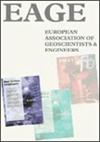从多方法电阻率数据集推断的花岗岩山集水区水文地质构造
IF 1.6
4区 地球科学
Q3 GEOCHEMISTRY & GEOPHYSICS
引用次数: 0
摘要
改变的结晶集水区的研究和建模很复杂,因为它们呈现出控制其水文地质行为的多尺度特性,并且很难通过单一的地球物理成像技术进行捕捉。必须对几个感兴趣的体积进行采样,才能捕捉到小尺度(孔隙度、分层)和大尺度(基岩、风化、断层)的非均质性。我们提出了Strengbach流域(法国Vosges山脉)的地电模型,旨在确定含水层的风化结构和水文地质功能。这是通过ERT和CSAMT测量以及使用适当的测量设置来实现的。通过该方法解决了表层土中米级浅对比、集水区级浅对比(顶部30米)和大尺度垂直对比(高达150米)。根据钻孔测量(伽马射线、光学图像)、采样水分析和地质测绘提供的信息,提出了结构解释。ERT未检测到的风化和断裂花岗岩的深度极限由CSAMT检测到。分析表明,花岗岩的风化状态对电阻率信号具有一级控制作用。浅层地电信号(前30m)特别受表面电导率的驱动,因此受粘土含量的驱动,而深层地电信号可能由孔隙水的离子含量和粘土含量引起。提出并讨论了一个结构模型。地电对比揭示了北坡和南坡之间风化腐泥土的几种性质。考虑到推断的结构模型以及风化和未风化结晶单元的分布对水文地质的影响,提出了一个新的集水区水文地质概念模型。这篇文章受版权保护。保留所有权利本文章由计算机程序翻译,如有差异,请以英文原文为准。
Hydrogeological structure of a granitic mountain catchment inferred from multi‐method electrical resistivity datasets
Altered crystalline catchments are complex to study and model, as they present multi‐scale properties that control their hydrogeological behavior and that are difficult to capture through a single geophysical imaging technique. Several volumes of interest must be sampled in order that both small‐scale (porosity, layering) and large‐scale (bedrock, weathering, faults) heterogeneities can be captured. We propose a geoelectrical model of the Strengbach catchment (Vosges Mountains, France), aiming at identifying the weathered structures and hydrogeological functioning of the aquifer. This is achieved through ERT and CSAMT measurements and the use of appropriate measurement setups. Meters‐scale shallow contrasts in the topsoil, catchment‐scale shallow contrasts (top 30 m) and large‐scale vertical contrasts (up to150 m) were resolved through this methodology. A structural interpretation is proposed, based on information provided by borehole measurements (gamma ray, optical images), analysis of sampled waters and geological mapping. The limits at depth of the weathered and fractured granite, not detected by ERT, are detected by CSAMT. The analysis showed that the weathering state of the granite controls, at first order, the electrical resistivity signal. Shallow geoelectrical signal (first 30 m) is particularly driven by surface conductivity hence by the clay content, whereas deep geoelectrical signal may arise from both the ionic content of pore waters and the clay content. A structural model is proposed and discussed. Geoelectrical contrasts revealed several qualities of weathered saprolite between the northern and the southern slopes. The inferred structural model and the distribution of weathered and unweathered crystalline units are considered for their respective effect on the hydrogeology, leading to the proposition of a new hydrogeological conceptual model of the catchment.This article is protected by copyright. All rights reserved
求助全文
通过发布文献求助,成功后即可免费获取论文全文。
去求助
来源期刊

Near Surface Geophysics
地学-地球化学与地球物理
CiteScore
3.60
自引率
12.50%
发文量
42
审稿时长
6-12 weeks
期刊介绍:
Near Surface Geophysics is an international journal for the publication of research and development in geophysics applied to near surface. It places emphasis on geological, hydrogeological, geotechnical, environmental, engineering, mining, archaeological, agricultural and other applications of geophysics as well as physical soil and rock properties. Geophysical and geoscientific case histories with innovative use of geophysical techniques are welcome, which may include improvements on instrumentation, measurements, data acquisition and processing, modelling, inversion, interpretation, project management and multidisciplinary use. The papers should also be understandable to those who use geophysical data but are not necessarily geophysicists.
 求助内容:
求助内容: 应助结果提醒方式:
应助结果提醒方式:


